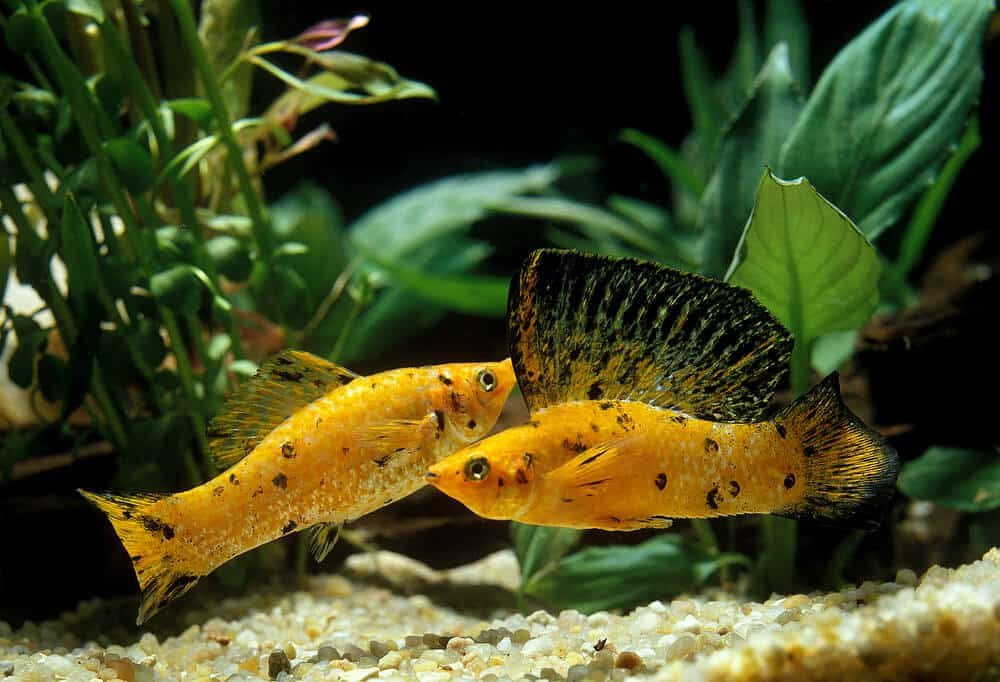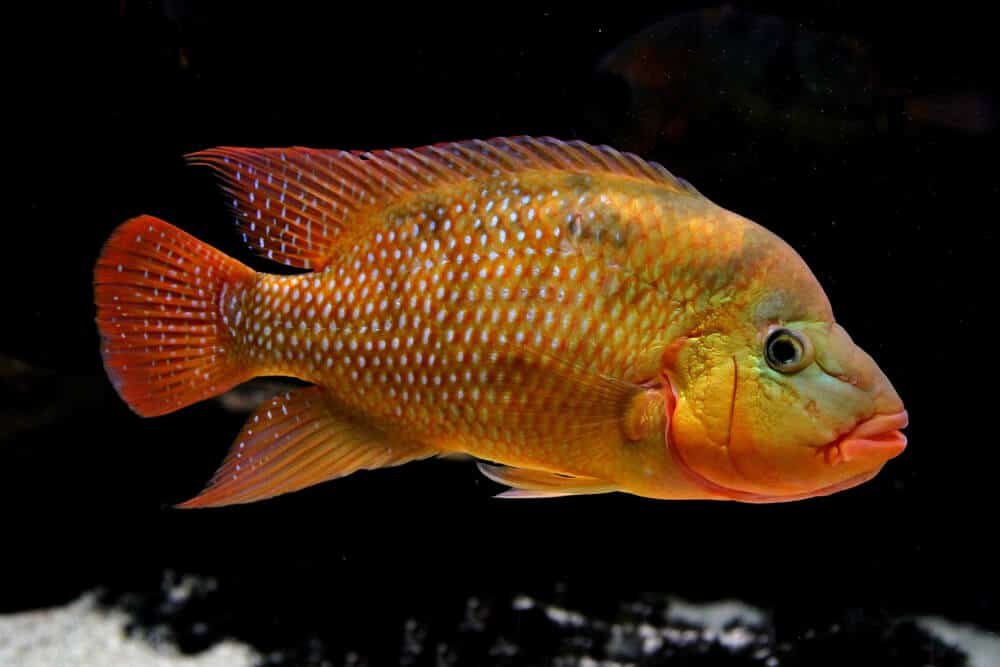Mollies are known to breed easily and quickly, which makes them a favorite for both neophytes and experienced breeders.
If you’re planning to buy Mollies, you’re in for a surprise if it’s still your first time handling them. It’s because the rate of Mollies breeding is faster than other types of fishes.
Knowing what to look for when they start breeding is a crucial step in ensuring that you’re taking care of them well.
This starts with identifying the eggs. What do they look like?
Here, we’re going to discuss what Molly eggs look like and other things to consider when breeding them.
What Do Molly Fish Eggs Look Like?
First, you have to know that Mollies don’t lay eggs for them to hatch. They bear fish fry directly.
The healthy eggs are retained inside the belly. They develop and mature inside until they’re ready to hatch and spurted out from the abdomen.
Second, the eggs you see that are laid by the Mollies are underdeveloped. These eggs look like small, yellow balls. They look like tiny egg yolks that are jelly-looking and translucent.
Lastly, since these eggs don’t hatch, they’ll likely rot or develop into fungus. The parent will likely consume these underdeveloped eggs.
Once you start seeing your Mollies pregnant, there’s a chance you’ll see roe-like eggs in your tank. They’ll form into this jelly structure, which you can opt to remove if they’re not eaten by the parent.
Take them out quickly before they go bad. Rotting eggs can significantly affect the quality of the water and possibly affect the fish and plants inside the tank too.
Most of the time, these eggs are attached near the edges of the tank or on plants, mostly in clusters. They can be seen at the bottom or floating freely in the water as well.
Take note though that the longer the eggs stay in the tank, the darker their color gets. They can be transparent or turn yellow or brown as they stay in the tank longer.
Since Mollies are livebearers, they’ll stay in one place when they’re ready to give birth to the fry.
Sometimes, you’ll see the eggs near the area too. However, if you do have to take them away, make sure that you’re not stressing your Mollies so that the rest of the eggs will still remain healthy.
Why Do Mollies Lay Underdeveloped Eggs?
When you start seeing your Molly laying eggs, this is not a great sign since it indicates that it’s stressed out.
Stress is a major cause for Mollies to do “stress spawning.” This is when the Molly starts to lay unfertilized eggs because of the high levels of stress hormones released, which affects the reproductive system.
Specifically, cortisol production is the cause of underdeveloped eggs being released. Your Molly can undergo physical changes as well because of too much stress.
This affects the quality and quantity of the eggs your Molly will produce in the future as well. So, ensure that before you start breeding, the tank is in perfect condition.
There are several reasons why a Molly can become stressed in the tank. Here are the most common causes to look out for so that you can better handle your Mollies during the breeding process:
Poor Tank Condition
Poor tank condition is a major cause of why your Mollies are stressed. The water temperature, hardness or pH level, and even the other fishes in the tank can stress out a pregnant Molly.
Know the right temperature and pH level for your Mollies and maintain them. Make sure that the tank is clean and big enough as well.
Change the water when needed and make sure you filter out the waste. However, be sure to follow the correct process of changing the water since Mollies are prone to becoming distressed when a change in their environment happens.
Poor Health
Poor health is another factor that leads to the laying of underdeveloped eggs. When your Mollies are unhealthy, they’re likely to become stressed as well.
Some of the most common causes of poor health are fungal infections. Mollies are especially prone to fungal infections.
When left unattended, infections don’t only lead them to lay underdeveloped eggs but even death. When you spot an infection, consult your vet immediately and provide the right dose of medication.
Your priority is to stop the infection from worsening to ensure that the eggs are safe.
Malnutrition
Fishes need full nutrition to thrive well. Your Mollies are no exemption, especially when they’re pregnant. Mollies won’t be able to produce enough nutrients for themselves and the fry, so boost them up by providing them with nutrient-dense feed.
Physical health and hormonal balance should be maintained for your Mollies to produce healthy fry.
That’s why you have to pick only the best quality feed for your fish. Choose a feed that is high in protein, minerals, and vitamins.
Unfertilized Eggs
Sometimes, due to natural reasons, some eggs just won’t develop further.
During the fertilization process, some eggs are left unfertilized. The underdeveloped eggs will be released the same way, but they won’t hatch anymore.
It’s best to just remove these underdeveloped eggs to prevent them from rotting and affecting the quality of the water in the tank.
How Often Do Mollies Give Birth?
Now that you know what Molly eggs look like and understand the reasons why they lay underdeveloped eggs, it’s important to also know how often they give birth.
In this way, you’ll be prepared during the breeding process.
Mollies typically give birth within 4-6 weeks. This is when they are receiving optimal conditions.
The more stressed they are, the lesser they give birth.
Apart from stress, you also have to consider the age of your Mollies. The older they get, the less active their reproductive system becomes.
Now that you’re aware of these, we hope that you can handle the breeding process of your Mollies better and have a huge batch of fry next time.







